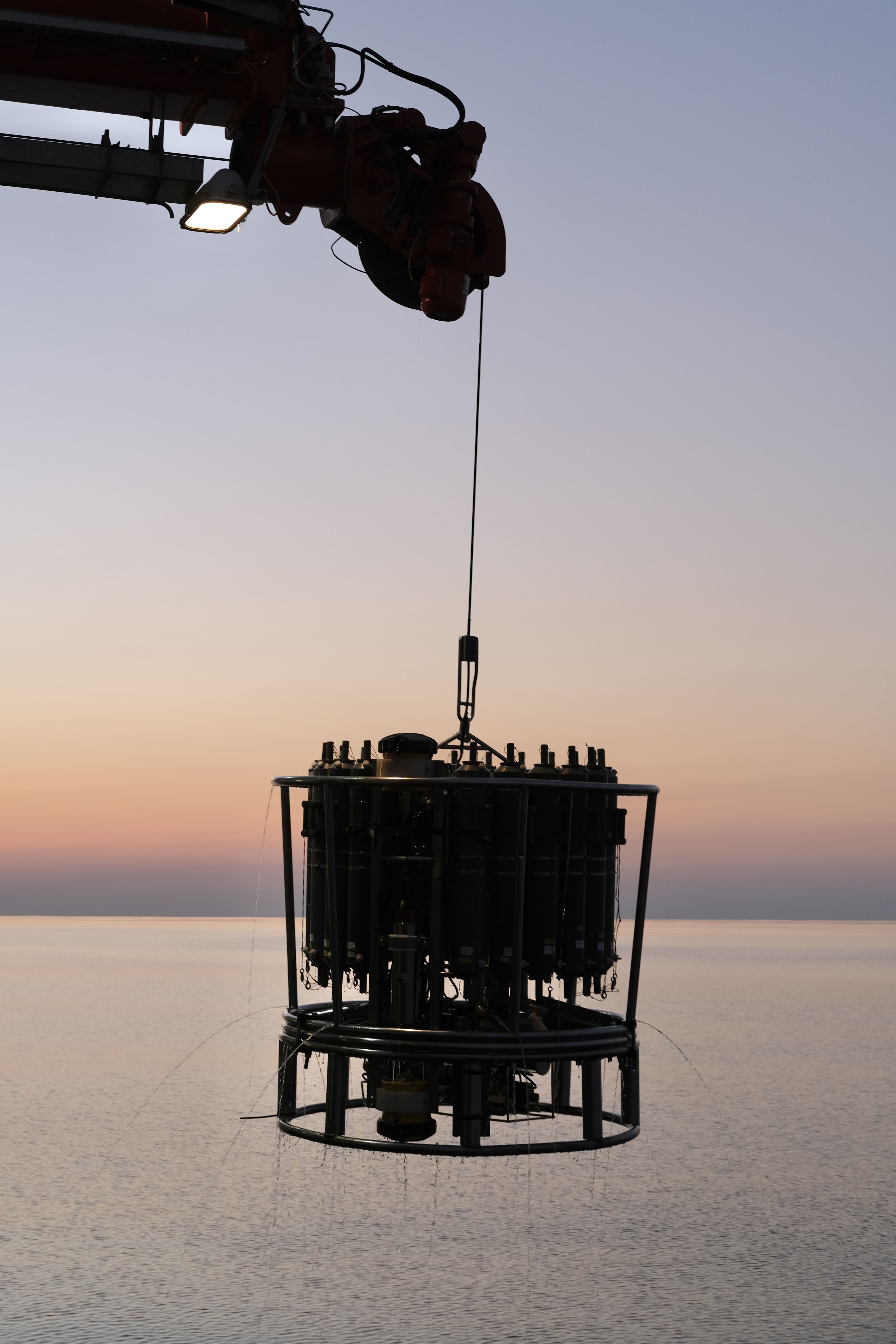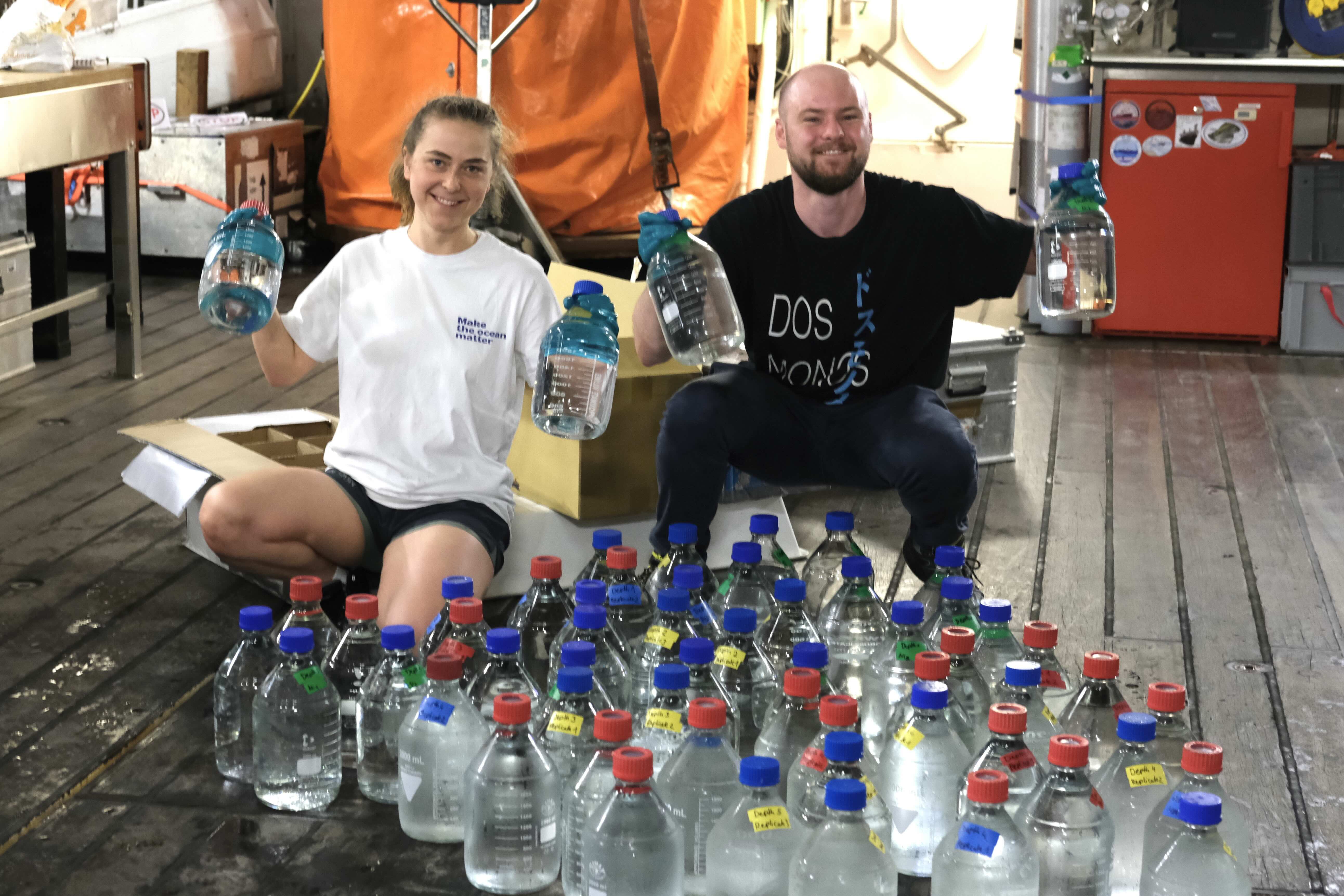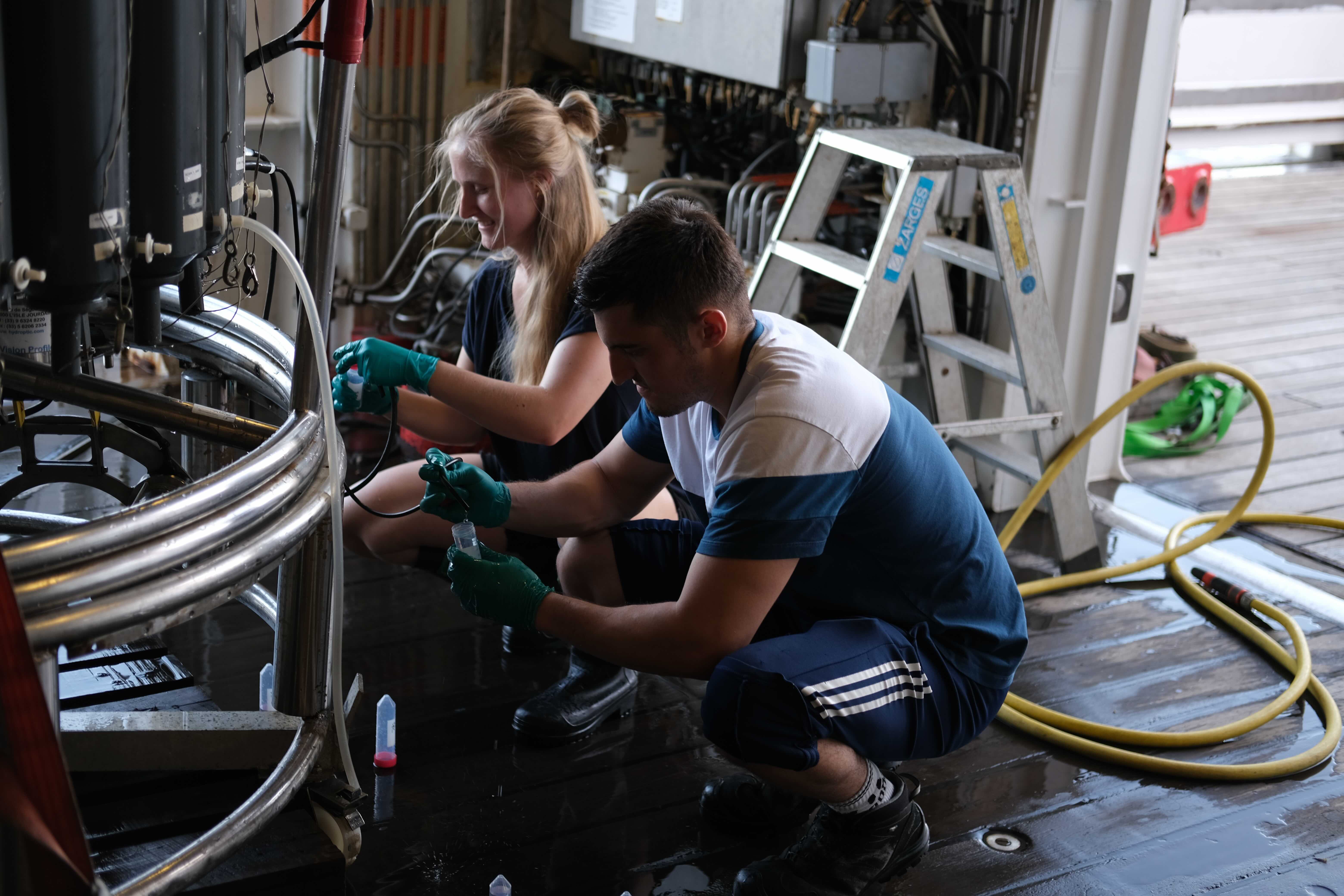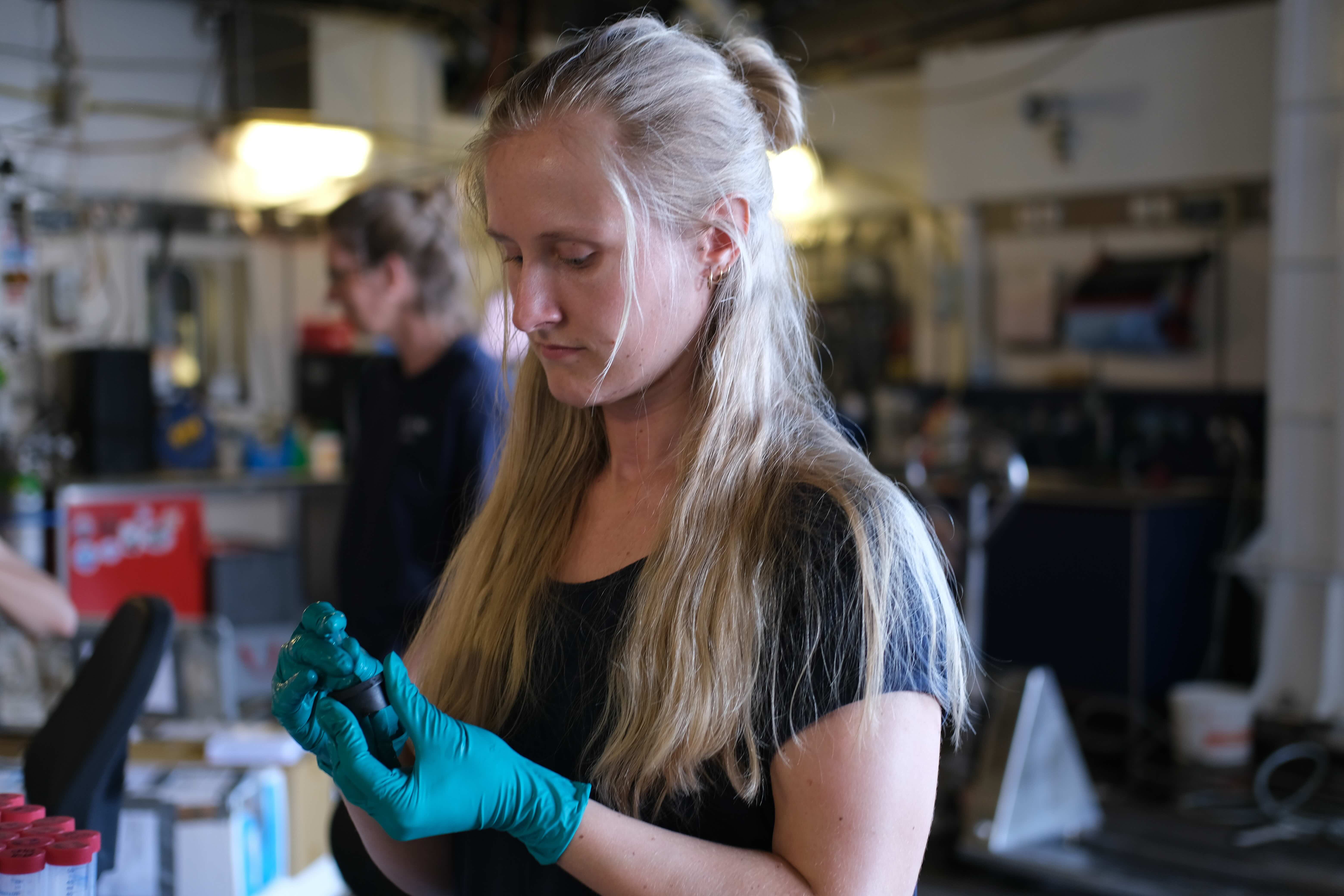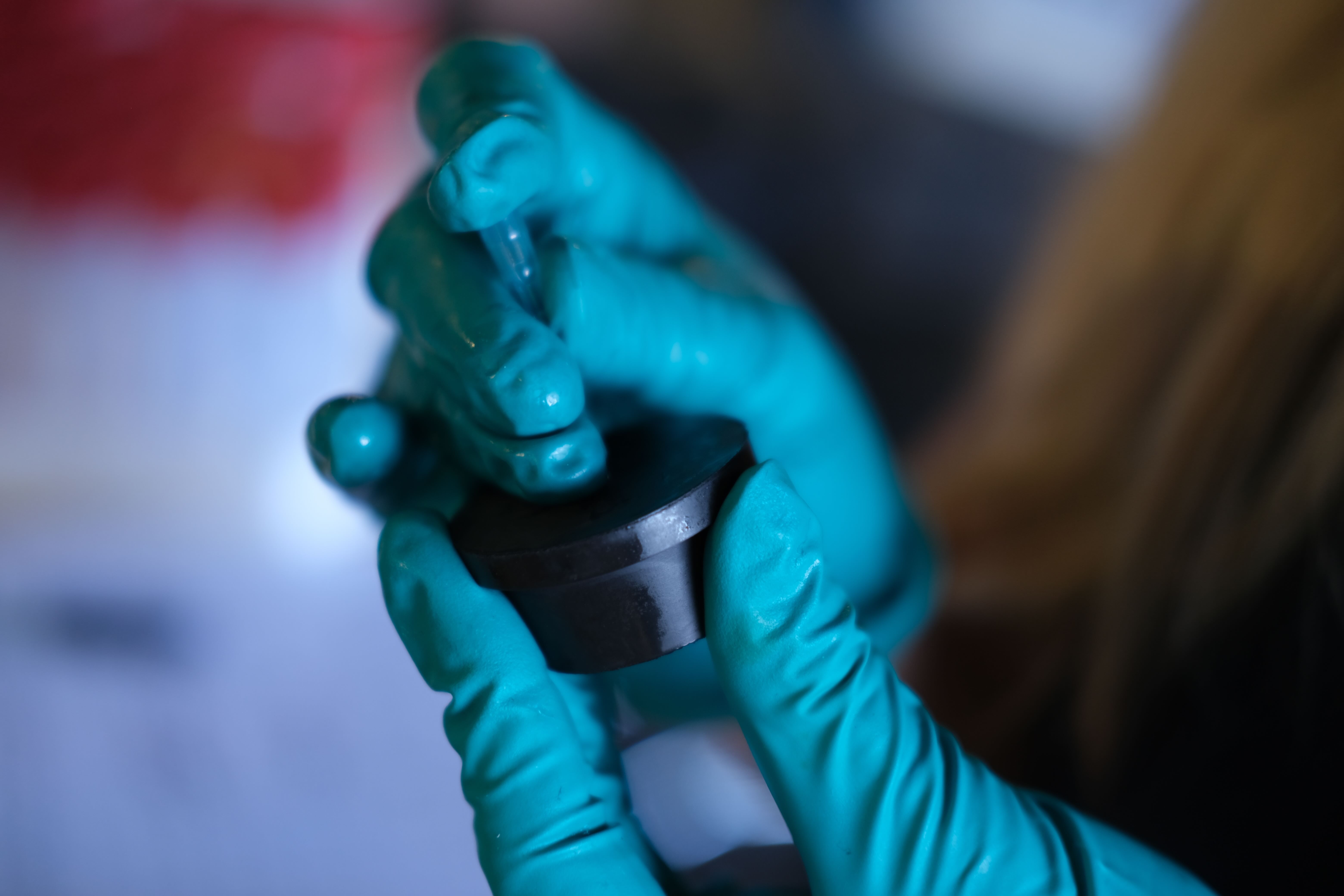by Isabell Schlangen
Welcome back to our Ocean Science Blog! Today, we’re delving into the fascinating world of carbon and nitrogen cycling in the Bay of Bengal, and how these processes are intimately connected in shaping the biogeochemistry of this region, particularly within the oxygen minimum zone.
Almost two weeks after leaving Colombo, we’ve become familiar with the ship, the crew, and the sampling procedures. The team has already amassed several boxes of samples and conducted two significant incubation experiments. While this isn’t Lubrinas, Victors, Mats and Isabells’ first time on a research vessel, each journey brings its unique challenges and adjustments. One part of our mission is to gather samples for molecular analysis, mapping a high-resolution profile across the Bay of Bengal. As the CTD plunges into the depths, it captures a snapshot of the ocean’s chemical composition, measuring parameters like temperature, salinity, fluorescence, and oxygen levels. This profile guides our sampling strategy, indicating depths with interesting features, such as the size and depth of the oxygen minimum zone.
Once the samples are collected, they require immediate processing. Water filtration and shock freezing with liquid nitrogen preserve the integrity of the samples for further analysis. Additionally, we conduct large-scale incubation experiments at various depths, requiring substantial amounts of water. Typically, we empty an entire CTD cast (approximately 200 liters) for these experiments, which involve different treatments and the addition of labeled nitrogen and carbon isotope substrates. These isotopes act as tracers, allowing us to track the fate of nitrogen and carbon molecules as they traverse the oceanic ecosystem.
During the incubation phase, surface water samples are incubated on the ship’s deck within specially designed tanks that simulate in-situ conditions. Here, under the sun’s warmth and the rhythmic motion of the waves, microbial communities commence the vital task of fixing carbon and nitrogen from the surrounding seawater. Meanwhile, samples from deeper depths are carefully transported to the laboratory, where they undergo incubation under controlled conditions. This way it allows us to study how carbon and nitrogen cycling varies with depth and environmental parameters. From particulate organic matter to greenhouse gases such as nitrous oxide (N2O).
But why the emphasis on carbon and nitrogen cycling? These processes are fundamental to understanding the intricate web of life in the Bay of Bengal. Carbon fixation by phytoplankton forms the foundation of the marine food chain, while nitrogen fuels the growth of primary producers and influences nutrient dynamics and N2O acts as a strong greenhouse gas.
In the oxygen minimum zone, where oxygen levels are depleted, carbon and nitrogen cycling takes on added complexity. Microbial communities adapt to low-oxygen conditions, driving unique biogeochemical processes with far-reaching implications for marine ecosystems and global nutrient cycles.
By studying carbon and nitrogen cycling through incubations, we gain invaluable insights into the ocean’s inner workings – from surface waters, to the mysterious depths below. This exploration reveals the intricate relationships between carbon and nitrogen, providing insight into the essential molecular processes that support life in the Bay of Bengal and beyond.
As the ocean faces the threat of deoxygenation due to climate change, understanding these processes is critical. The Bay of Bengal, on the cusp of anoxia, serves as an ideal natural laboratory for exploring how marine life adapts to dwindling oxygen levels.
The goal of our project is to provide the first high-resolution dataset on the biogeochemical processes and biodiversity of the region. This isn’t just data for data’s sake; it will serve as a foundation for enhancing our predictive abilities concerning the future of oceanic well-being and guiding strategies to mitigate the detrimental impacts of climate change.
With a primary goal of safeguarding marine biodiversity and ecosystem resilience, the knowledge gained from our team’s research will play a pivotal role in advancing the objectives outlined by worldwide ocean science initiatives.
So next time you gaze out over the vast expanse of the ocean, remember the tiny microbes and their mighty role in shaping the seascape above and below the surface. And stay tuned for more oceanic adventures right here on our Ocean Science Blog!

